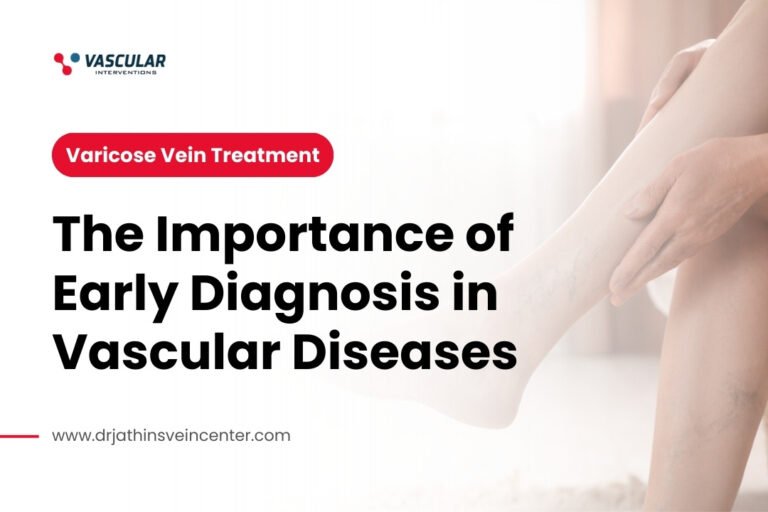What exactly are varicose veins, and how do they form? What are varicose veins, and how do they develop?
Varicose veins are considered a medical condition that causes the veins to get twisted and swollen. It can generally affect any part of the body, but they are most Prominent in the legs. About varicose veins, they are not a critical medical condition. Lower leg-burning, aching, joint pain, and swollen Pain that develops after walking or running for an extended period are some of the indications of Varicose Veins Initial Stage.
Explain How Varicose Veins Form:

The start of varicose veins begins when the veins are not operating correctly. As we all know, blood cannot travel backward through the veins because of one-way valves. If these valves fail to function properly, it could be because of weak or impaired valves; the blood starts getting accumulated in the veins instead of flowing into the heart.
1. Causes of Varicose Veins
Causes of Swollen Veins can be improper or torn valves. Blood is carried from the heart to various tissues in the body with the help of arteries as they transport blood, while on the other side, the function of veins is to restore the blood from the entire body to the heart, which allows the blood to recirculate. Throughout this process, the veins in the legs face a challenging task in transporting blood to the heart because they must fight gravity. Lower leg muscular contraction function as a compressor while the vein wall which of flexible allows the blood to flow back towards the heart as the blood moves towards the heart the small valves which the present in the veins tends to open and shut which helps to prevent the blood from going backward. Therefore, there is a high chance that the blood can move backward and get stagnant in veins if valves are broken, straining, or twisting the veins.
2. Varicose Veins Symptoms and Signs:
- Swelling veins seem to be visible beneath the skin’s surface and seem thick, blue, or dark purple veins. Your ankles and feet are inflamed.
- Legs that have been hurting or sore and seem “weighty.”
- Leg muscle cramps, especially late at night
- Legs start itching, particularly in the lower thigh and ankles.
- There is a feeling of blistering or pounding in the legs.
- Varicose veins cause discolored areas of skin surrounding the affected area.
When the weather is warm, there is a high chance that the varicose veins symptoms can get aggravated. This can sometimes also lead to cause black nerves in the legs. The person can also have Varicose Veins without Pain. One strange thing seen is Varicose Veins In One Leg Only. It is believed it is because of excessive exercise on the injury on one part of the leg.
3. Early Stage Varicose Veins Symptoms:
One has to keep track of their body health if they want to identify varicose veins at the very early stage. There are some of the early signs of varicose veins mentioned below.
- Your lower leg will start to develop a light red patch.
- You will have minor Pain in the legs
- Black nerves in legs. People who are skinny and their veins are visible are more likely to have varicose veins.
- After a long day, you will find your feet are swollen.
- Family history can also play an important part in the development of varicose veins.
4. Vagus Vein Symptoms:
- A person can lose his voice and have difficulty speaking.
- The tone of the voice turns Harsh or creaky.
- Will have Pain while consuming any liquid substance.
- The person will have Pain in his ears.
- Abnormally cardiac output.
- low gastric acid production
Best Exercise for Varicose Veins
- Walking: Walking is the best exercise for preventing varicose veins as it loosens up the calf muscles.
- Swimming: Swimming is an excellent exercise because the strokes you make when swimming raise your legs and help to keep the blood moving, preventing blood from collecting in one spot.
- Cycling: Cycling is a helpful exercise that helps in strengthening the calf muscle without putting much stress on the legs
- Yoga: Yoga positions can benefit in increasing blood circulation by performing certain yoga positions like lifting legs above the heart.
- Ankle rotation: rolling and extending your ankles can be a healthy workout for the ankles as they will free up the muscles in the legs, which will indeed improve the flow of blood and make them free.
Varicose Veins Are the Result Of the increased blood pressure in the veins. This condition can be easily prevented by taking proper care of the health by doing yoga; exercises of the legs, which will help in maintaining the flow of blood in the body. Therefore it is highly recommended that if you ever find any of the symptoms or signs, go check the nearest medical facility and do proper treatment.


